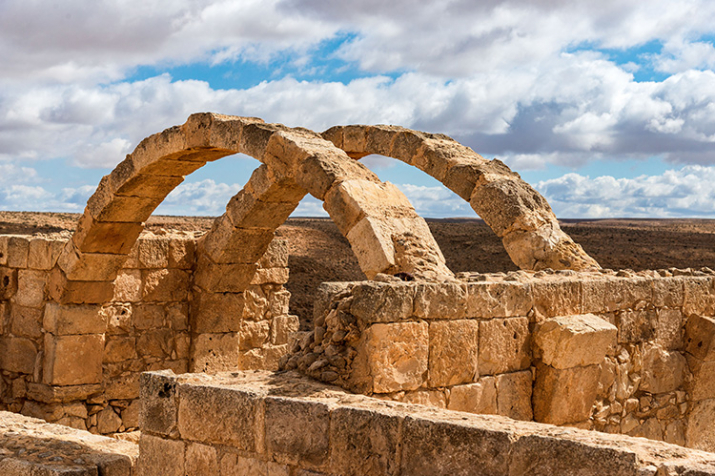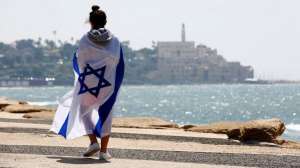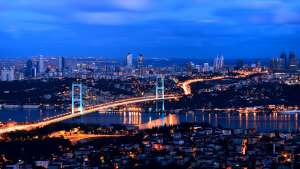For anyone interested in history, Israel is one of the most fascinating places in the world. Home to some of the world's most famous religious tourist attractions, Israel is often thought of purely as a pilgrimage destination. Not only because of the sheer number of historical sites but that they are all within relatively close proximity to each other. After all, this is where some of the main events for those of the Jewish, Muslim, and Christian faiths is said to have happened.
We’ve put together an experts guide to Israeli cultural monuments and landmarks, with our top ten places to visit as well as a full list of Historic Sites in Israel, which shouldn’t be ignored if you have the time.
Best Historic Sites in Israel
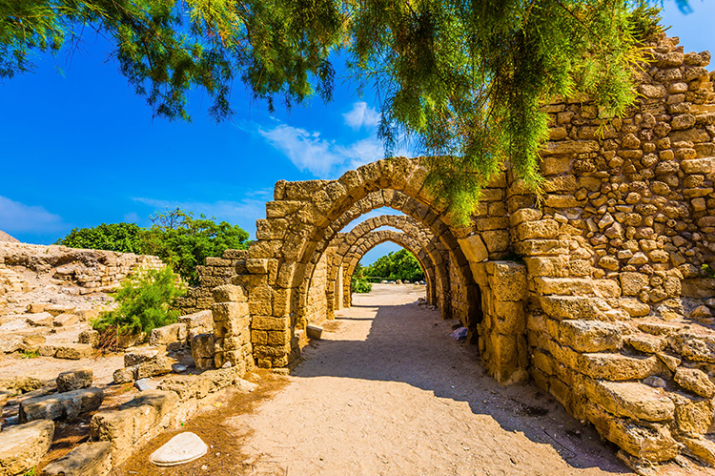
1. Caesarea
Caesarea or “Keysarya” was an Ancient Roman city which is now a large archaeological site in Israel. It was King Herod the Great who named the city Caesarea – after Augustus Caesar – and who endowed it with the majority of its great public buildings, infrastructure and monuments from 22 BC.
Today, Caesarea offers so much to see, including a large amphitheatre overlooking the ocean and an extensive labyrinth of ruins. Some of the most imposing remains at Caesarea are its Crusader fortifications.
Nearby, visitors can also explore the stunning remains of the Caesarea Aqueduct. Unless willing to hike for quite a while, it’s best to drive to this site. Overall, a trip to Caesarea can last anywhere from one to three hours and makes for a truly excellent day out.
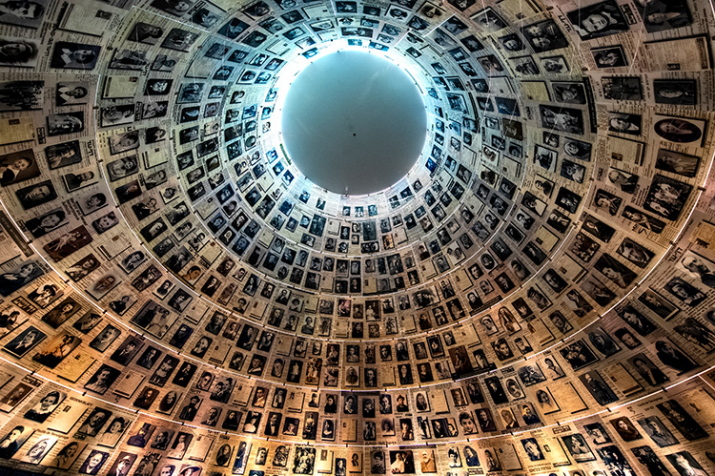
2. Yad Vashem
Yad Vashem in Jerusalem is a museum and a memorial of the Holocaust, in which over six million Jews, and at least five million from other ethnic groups, were murdered in an act of genocide perpetrated by the Nazis.
Beginning with the persecution of the Jews in Germany in 1933, the Nazis began a campaign in which Jews and other social and ethnic groups were taken into forced labour and extermination camps, suffering torture, intolerable conditions and mass executions.
Through exhibits including photographs, victims’ accounts, art installations and information panels, Yad Vashem offers a moving – and harrowing – account of the events of the Holocaust.
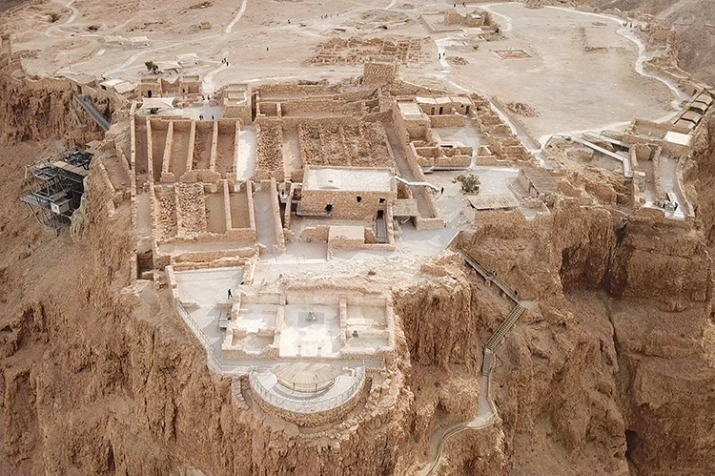
3. Masada
The fortress of Masada, which rises majestically above the Dead Sea, was originally built in 150BC. The original structure was renovated by Herod the Great in 43BC in order to improve its capacity to withstand drawn-out sieges.
In 66AD, Masada was the site of the last stand of the Jewish Zealots against the Romans after they had fled Jerusalem. Today the site clearly marks out the passage of the siege. Visitors can see the archeological remains of the fortress and those of the surrounding Roman camps.
The site, which has a breathtaking view of the area, is regularly walked in the early hours of the morning in order for visitors to witness the rising of the sun. Visitors can view a wealth of ruins at Masada, a sound and light show telling the story of the siege as well as visiting the new Masada Museum.
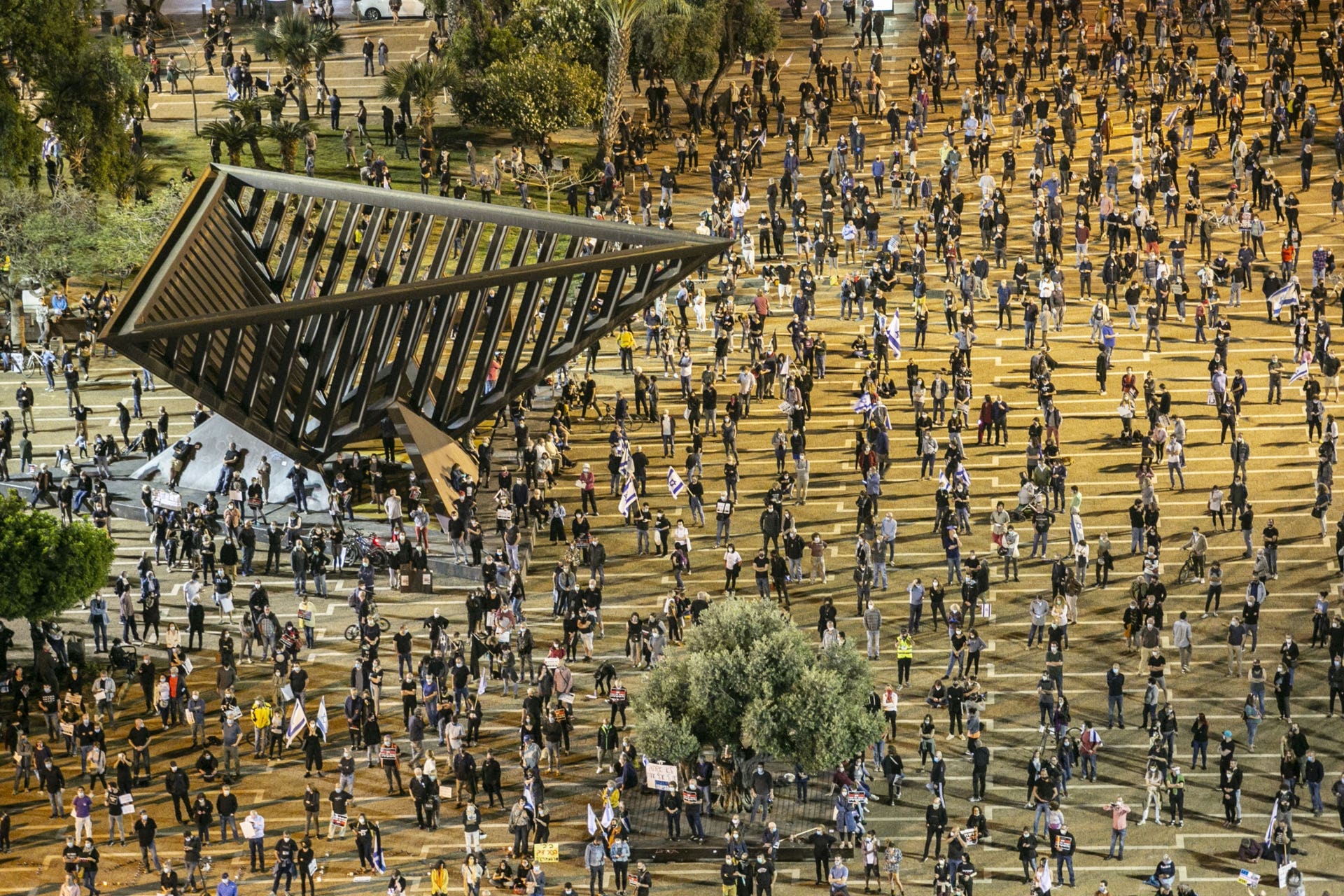
4. Rabin Square
Rabin Square (Kikar Rabin) is a large public plaza in Tel Aviv, Israel. Formerly called Israel Kings’ Square, it was renamed Rabin Square after Prime Minister Yitzhak Rabin, who was assassinated there in 1995.
The assassination of Prime Minister Rabin took place on 4 November of that year during a peace rally just after he had given a speech. This speech is now engraved at the top of the stairs at Rabin Square in Hebrew, English and Arabic.
Today Rabin Square has a memorial to Yitzhak Rabin and still bears much of the pro-peace graffiti which was created following his death. Centrally located in Tel Aviv, Rabin Square still serves as a popular spot for demonstrations, peace rallies, exhibitions and public gatherings however on most days it looks like a typical city plaza. It is also neighboured by City Hall as well as several main streets.
5. Avdat
Avdat or “Ovdat” is an archaeological site in Israel which houses the pretty remains of an ancient Nabatean city later inhabited by the Romans, the Byzantines and the Arabs. It initially formed part of the trading route known as the Incense Route which ran from the Mediterranean to south Arabia and which peaked from the 3rd to the 2nd centuries BC. The main commodities along this route were frankincense, myrrh and spices.
In addition to well-preserved fortifications, the ruins at Avdat include a caravanserai, homes, a Roman military camp, fourth century churches, a street and a bathhouse. Many of the ruins are Roman, but the Nabatean influence can still be seen, including the ruin of a temple.
Today, Avdat is a UNESCO World Heritage site, as one of four Desert Cities of the Incense Route.
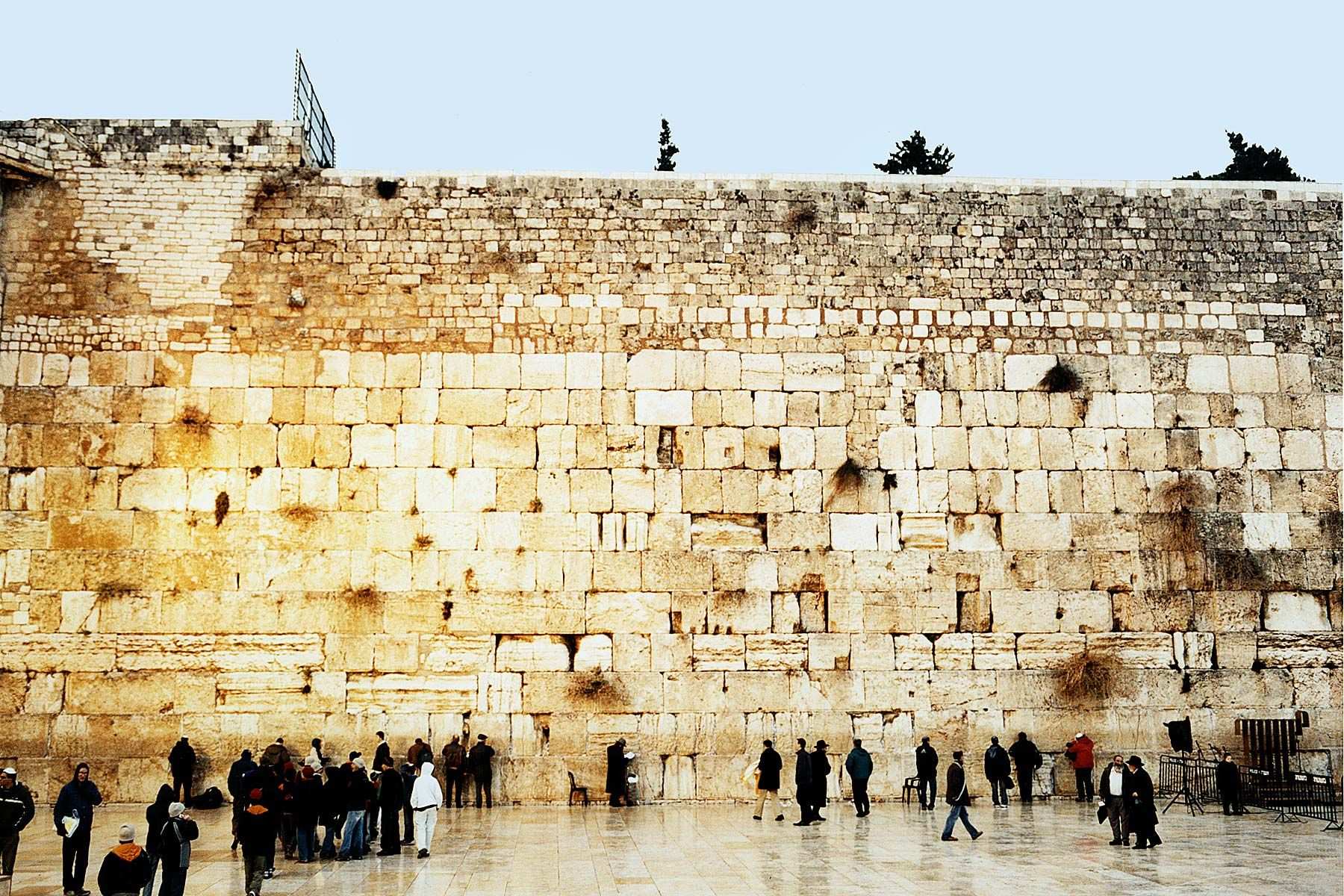
6. The Western Wall
The Western Wall is the sole remaining part of a wall of the Second Temple of Jerusalem. This temple, which stood from 516 BC, was the holiest of Jewish sites and was destroyed by the Romans led by Titus in 70 AD, with the Western Wall being one of very few surviving remnants.
Today, the Western Wall is the holiest of Jewish sites, always surrounded by worshippers, many of whom place prayers in its crevices. While the lower half of what can now be seen dates to the time of Herod, the upper parts of the Wall were added in the seventh century AD. In addition to the external part of the Western Wall, visitors can also enter the Western Wall Tunnels, which show the extended parts of the structure.
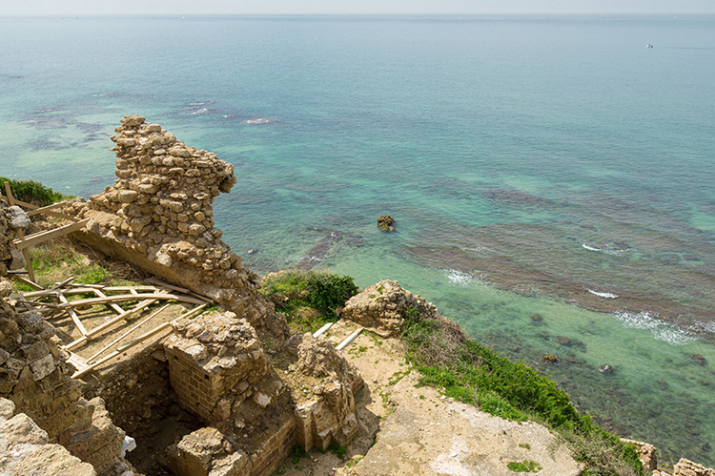
7. Arsuf
Arsuf, also known as Apollonia, contains the remains of an ancient settlement on the Israeli coast that has stood for over 1,000 years. Arsuf is best known for the remains of a once-mighty Crusader castle which was once home to the Knights Hospitaller, but the site also contains remnants from the many other civilisations that have occupied the area.
Today, Arsuf has been excavated and is now Apollonia National Park. Visitors can see the remains of the Crusader fortress, including evidence from the final battle. The clifftop setting and impressive defensive moat bring to life the scale and drama of the once-mighty castle. Also on show are the remains of a Roman villa, which highlights the diverse nature of the settlement at Arsuf.
Visitors can wander through the remnants of Crusader chambers and the site contains useful information on the various areas of the ruins. During the holidays, events are often held here for children and the site can make for a good family day out.
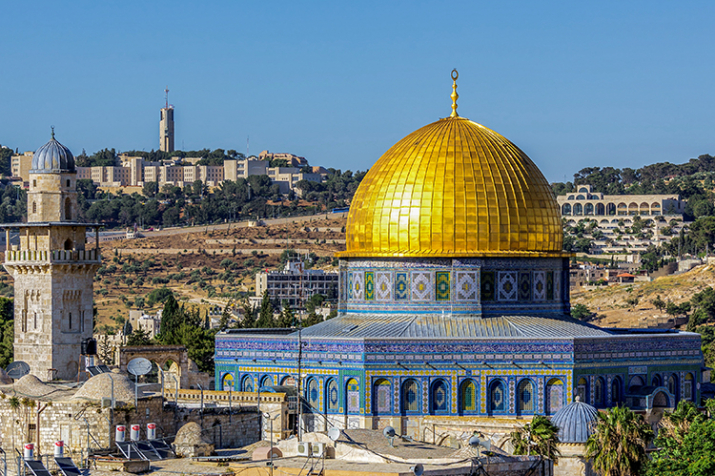
8. Dome of the Rock
The Dome of the Rock is one of the world’s most famous holy sites. Not only is its iconic golden dome an integral part of the Jerusalem landscape, but the Dome of the Rock and its location are of great significance to Muslims and Jews.
The building of the Dome of Rock is considered the oldest existing Islamic structure, having been completed in 691 during the Umayyad Dynasty. The site chosen for its construction is believed by Muslims to have been that of the Prophet Muhammad’s ascent to heaven. Despite being open for prayers, the Dome of the Rock is not a mosque but rather a shrine.
The name “Dome of the Rock” alludes to a further reason for its religious significance and is derived from what lays within its walls .The dome houses what Jews believe is the Foundation Stone, the site where Abraham (Ibrahim) was to sacrifice his son Isaac. The stone has a piercing which leads into a cave which also houses two shrines. Moreover the rock has two imprints, one of which is said to belong to the Prophet and the other to the angel Gabriel.
In the 16th century Suleiman the Magnificent amongst his various architectural renovations added to the blue and green marble the texts and patterns which are on the walls of the Dome of the Rock today. The interior of the dome, which is only accessible to Muslims, is said to be equally lavish.

9. Church of the Holy Sepulchre
The Church of the Holy Sepulchre in Jerusalem is holiest site in Christianity due the fact that it encompasses what are thought to be the last five stations travelled through by Christ, ending in his crucifixion.
Built in 325/6AD by Roman Emperor Constantine I (the first such emperor to convert to Christianity), the Church of the Holy Sepulchre is located on what many Christians believe to be Golgotha/The Hill of Cavalry, where Christ is said to have been crucified and later resurrected. It derives its name – Sepulchre, meaning the tomb- from the belief that it is the site of Jesus’ burial.
The sepulchre, the burial place of Jesus, is at the core of the church whilst the other four stations are clustered in The Hill of Cavalry. The décor of this section of the church is noticeably more opulent is believed to be the site of Jesus’ crucifixion.
At present the building itself is controlled by six Christian churches – the division of the site can be traced from the 11th century, and was solidified by the Ottomans in 1767. Since 1981, the Church of the Holy Sepulchre has been a UNESCO World Heritage site as part of the Old City of Jerusalem and its Walls.
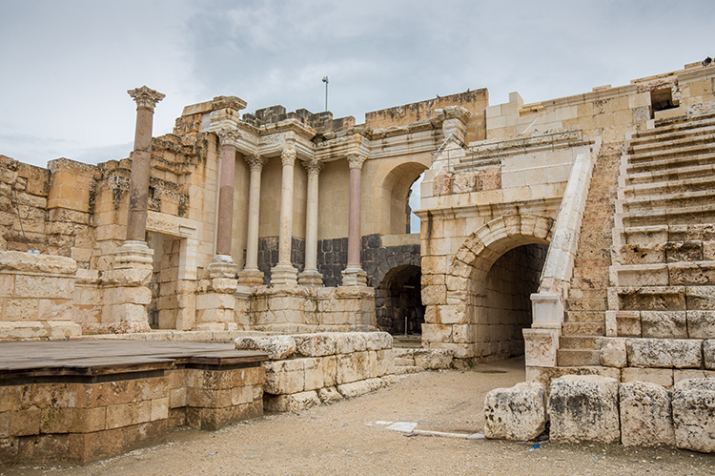
10. Beit She’an
The ancient city of Beit She’an in the northern Jordan Valley is an immensely impressive archaeological site with remains dating back mostly to the Roman and Byzantine period.
The site itself has an extensive history dating back to around the fifth millennium BC and was a significant settlement by the Bronze Age period. During the Late Bronze Age, when the Egyptians ruled the area, Beit She’an served as the administrative centre of the region.
As the Egyptians lost control of the region, around the 12th century BC, the Egyptian city was destroyed by fire and a Canaanite city rose in its place, before the Philistines conquered the area. It was during this period that Beit She’an gained a Biblical reference when the Israelites under King Saul were defeated at the Battle of Mount Gilboa – it is said that the body of Saul was hung from the city’s walls, along with the bodies of his sons. The city was then captured by the Israelite king David and formed part of the Israelite kingdom until its destruction by the Assyrians in 731 BC.
Following this period the city was later re-founded as a Hellenistic settlement and was known as Nisa Scythopolis. As with many of the ancient cities in the area Beit She’an was later incorporated into the Roman Empire and survived under Roman and later Byzanine rule for several centuries; it was one of the ten cities of the Decapolis league. Most of the remains of Beit She’an which can be seen today date back to this period, which is when the city reached its zenith with a population approaching 50,000 by the 5th century AD.
The city continued to function after the 7th century Arab conquest, despite seeing a decline in its prominence and size. However, it was not war or man-made destruction which signalled the end of Beit She’an, rather a major earthquake which struck the region in 749 AD and devastated the city. There were subsequent periods of occupation after this event – including a period of Crusader rule which saw the construction of a Crusader castle – but the ancient city itself fell into ruin.
Today visitors to the site can explore the remains of ancient Beit She’an (also called Bet She’an, Beth Shean or Bet Shean) which sits on the eastern side of the modern city of the same name.
Among the ruins are the impressive colonnaded main street (known as Paladius Street), parts of the defensive walls, the reconstructed Roman theatre, an ancient amphitheatre, Byzantine bathhouse and even structures dating back to the Egyptian and Canannite periods, such as a large Canaanite temple and the ancient house of the Egyptian governor. The remains of the Crusader castle can also be visited as well as a Mamluk-era mosque.
Alongside the ruins sits the Biblical Mount Gilboa, which affords excellent views of the surrounding area, and visitors can also purchase tickets for the impressive sound-and-light experience which is run at the site. Beit She’an features as one of our Top 10 Tourist Attractions in Israel.


